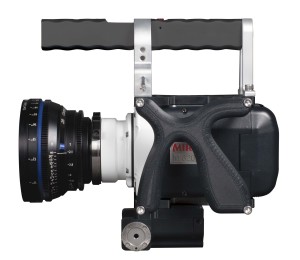Here’s an update of our NAB Phantom Miro article, with stupendous slow motion footage and behind-the-scenes from filmmaker Jim Geduldick. Do not attempt in your own home or without checking off a very long list of scary disclaimers. Jim Geduldick is an action cinematographer, skateboarder and snowboarder. Growing up, he attended Camp Woodward in Pennsylvania as a camper, coach and visiting sponsored rider. The camp was started in the ’70s for gymnastics, and became a center for action sports before that term was used. He recently returned there with Phantom Miro cameras to shoot slow motion scenes for a series of shorts on action sports and mental conditioning. AbelCine and Vision Research helped with equipment, logistics and support.
The Phantom Miro M320S is the flagship of Vision Research’s new Miro M-series, offering an entry into highspeed imaging up to 1500 fps at 1920 x 1080 resolution with HD-SDI monitoring output. Its compact size, smooth workflow and pricing make the Miro M-series one of the most accessible high-speed cameras available today for commercials, feature films, sports, motion analysis, dance, stunts and television.
Miro M complements the entire Phantom camera line-up, including the high-end Phantom Flex. Each Miro M-Series camera is compatible with Vision Research’s CineFlash storage. These removable, non-volatile storage devices slide into the camera body and provide a way to quickly save shots from the camera’s memory without the need for time-consuming and costly downloads. After shooting, remove the CineFlash module from the camera and insert it into the docking station connected to a computer. Scenes stored on the CineFlash are now immediately available on the computer. You can also transfer the scenes from the camera to your computer and edit the images using VRI’s Remote Control Unit or Phantom Camera Control software (PCC). A 60GB Cine- Flash and Dock come with every camera purchase.
The Phantom Miro M-Series comes with a choice of four interchangeable lens mounts: F, C, PL or EOS. EOS mounts allow the use of Canon EF and EF-S automated lenses. These cameras also have a number of other advanced features including an internal capping shutter, image-based auto-trigger, camera synchronization, immediate playback of recorded scenes, and more.
Key Features of the Miro M320S:
- Max recording of 1500 fps at 1920 x 1080 resolution
- HD-SDI Monitoring Output
- CineFlash storage technology – Record to non-volatile storage devices and download using docking station (included) and Phantom Camera Control Software
- Internal capping shutter
- Immediate playback
- Available in multiple lens mounts: F, C, PL and EOS Other camera models in the Miro line include the M120 (800 fps, 1080), M310 (3600 fps, 720) and M110 (1500 fps, 720).
AbelCine has developed a range of accessories specifically designed for the Miro to make the camera work more flexibly and efficiently. The AbelCine Essential Mounting Kit enables the Miro to be rigged in a variety of configurations. Kit components are modular and designed to be combined in different ways to accommodate a wide range of production styles. This flexibility, along with numerous strategically placed mounting points, allows the Miro to be used hand-held or attached to virtually any head or rig. Third-party accessories like handles, monitors, follow focus devices, matteboxes and more are easily attached to Miro with the AbelCine Essential Mounting Kit, which includes:
- Two I-Plates (one on top, one on bottom)
- Rosette Bar (provides rosette on camera right side)
- Top Handle Assembly
- X-Grip (works like a handgrip)
- CineRiser (with camera left rosette) Additional accessories will include an onboard Breakout Box and a new PCU Control Unit.
AbelCine is the North American distributor of Phantom Products from Vision Research.








